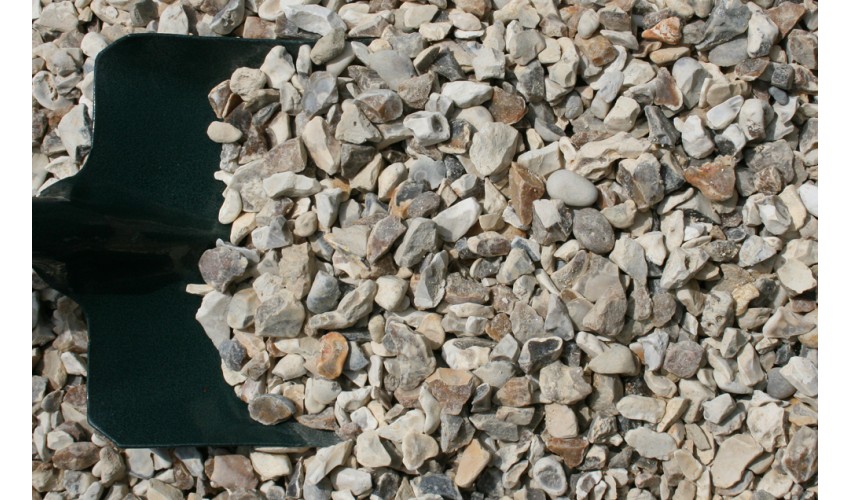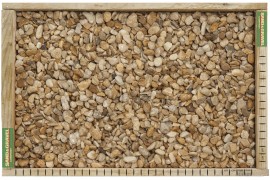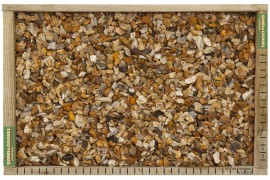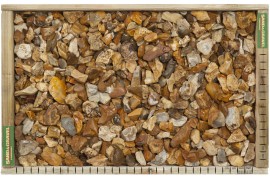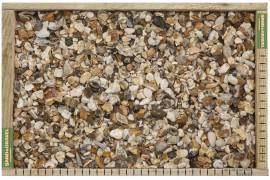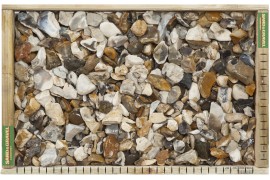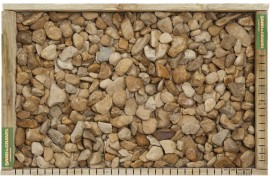Gravel can be a great surface to choose when re-decorating your garden. It’s a cost-effective and easy option that can help transform your garden as long as you consider the size of gravel, surface below the gravel and what role you want the gravel to have.
How to lay gravel correctly
Transforming your garden with gravel is a cost-effective and versatile choice, providing a visually appealing surface. To ensure the success of your gravel project, careful consideration of factors such as gravel size, surface preparation, and its intended purpose is crucial.
In this guide, we’ll delve into the details of choosing gravel, preparing the surface, and adding finishing touches to create a stunning and functional outdoor space with the sound enhancing natural security.
Surface Preparation for Gravel
Proper preparation ensures the longevity and stability of your gravel landscape:
If you use gravel for a more practical purpose, such as a footpath or driveway then it is advised that you dig down roughly a minimum of 15cm and place a sub-base of 100mm before laying around 50mm of gravel on top. This prevents the gravel from moving and sinking under various weights and movements.
For decorative purposes, clear the surface, flatten it, and use a weed-suppressing membrane to prevent weed growth. Lay your chosen gravel on top, adjusting it to achieve your desired look.

Choosing the right size of gravel:
It is important to consider the size of the gravel before purchasing. The size of gravel plays a pivotal role in both functionality and aesthetics.
Decorative use:
Decorative gravel does not get disturbed very often and so it does not matter if you choose to have finer gravel such as pea shingle. Using larger gravel is also acceptable.
Practical Use:
If you wish to use the gravel for a more practical purpose, such as for footpaths or driveways, then it may be a good idea to choose medium-sized gravel. If the gravel is too small/fine, then it will be moved around too easily as you walk over it.
Maintenance tips:
To keep your gravel area looking pristine, follow these maintenance tips.
- Regularly raking: Periodically rake the gravel to maintain an even surface and prevent uneven settling.
- Weed suppression: If using a weed-suppressing membrane, inspect and cut out sections as needed to allow for planned plant growth.
- Edging check: Regularly inspect and secure the edging to prevent gravel displacement.
Explore our range of decorative shingle:
Discover a range of decorative shingle or chippings options to suit your taste. From fine textures to bold, chunky options, our range offers versatility for creating the perfect outdoor ambience.
Bedding layer - Utilise Grade C/Sharp Sand as a bedding layer on a compacted sub-base for block or slab paving. This method ensures stability and durability for the paved surface.

Porous Paving System (SUDS)
In cases where planning requires a porous paving system, such as Sustainable Urban Drainage Systems (SUDS), consider the following materials:
- Open Graded Crush Rock (OGCR) - An ideal choice for SUDS-compliant paving systems, OGCR provides effective drainage while maintaining a stable surface.
- 2-6mm Carboniferous Limestone Chippings - Use this as a bedding layer for porous paving, complementing the functionality of OGCR.
Material Options: 
Explore a diverse range of materials to suit your specific needs and preferences:
- Oxford Shingle (20mm & 10mm)
- Moban Flint (20mm & 10mm)
- Golden Flint (20mm & 10mm)
- Bubbenhall Quartz (20mm & 10mm)
- Cotswold Gravel Chippings (20mm)
- Cotswold Limestone Chippings (20mm)
- Carboniferous Limestone Chippings (20-10mm)
- Self-Binding Gravel
- Crushed Limestone (75-40mm, 40-20mm)
- MOT Type I
- MOT Type 3
FAQ’s
What type of gravel is best for paths and walkways?
The choice of gravel depends on your aesthetic preferences and functional needs. Common options include Cotswold Chippings, Shingles, Flints, and Quartz Shingles.
How deep should I lay the gravel for a path or walkway?
The recommended depth is typically 40-50mm for loose gravel finishes. However, for practical purposes or footpaths, a deeper layer may be necessary. Consider site and ground conditions for optimal depth.
Can I use any type of sub-base for gravel paths?
Crushed Limestone or Type I are commonly used as sub-base materials. The depth of the sub-base should be considered based on the specific requirements of the project and ground conditions.
What is self-binding path gravel, and when should I use it?
Self-binding path gravel is a material that compacts to form a stable, bound surface. It is ideal for footpaths, walkways, and areas requiring accessibility for wheelchairs, cycles, and trolleys.
How do I prevent gravel from moving or sinking underfoot?
For loose gravel finishes, ensure a proper sub-base layer of Crushed Limestone or Type I. Additionally, compacting the gravel and using an appropriate depth will minimise movement and sinking. Also, no more than 50mm depth of loose gravel/shingle is suited to a path. Any deeper and accessibility may be compromised.
What is the recommended construction process for paving with blocks/slabs on gravel?
Use a bedding layer of Grade C/Sharp Sand on a compacted sub-base for paving with blocks or slabs. This ensures stability and durability for the paved surface.
Can I use gravel for a porous paving system, such as SUDS?
Yes, for a Sustainable Urban Drainage System (SUDS), consider using open graded crush rock (OGCR) and 2-6mm Carboniferous Limestone Chippings as the bedding layer.
How do I maintain a gravel path or walkway?
Regular maintenance includes raking the gravel to ensure an even surface, addressing weed growth using weed-suppressing membranes, and inspecting and securing edging.
What are the benefits of using porous materials for paths and walkways?
Porous materials, like OGCR and Carboniferous Limestone Chippings, facilitate effective natural drainage, reducing the risk of water pooling and ensuring a stable surface.
Can I use gravel for both decorative and practical purposes in the same area?
Yes, by selecting a versatile gravel type and adjusting the depth, you can achieve both decorative appeal and practical functionality in the same path or walkway area.
What are the advantages of using Self Binding Gravel for paths?
Self Binding Gravel forms a compact and stable surface, making it ideal for footpaths and walkways. Its bound nature minimises movement and provides a smooth finish.
If you have any further questions or concerns, please feel free to contact us
